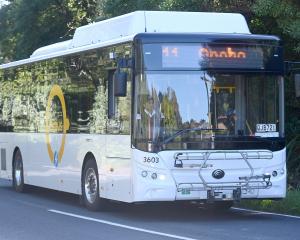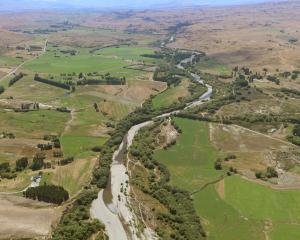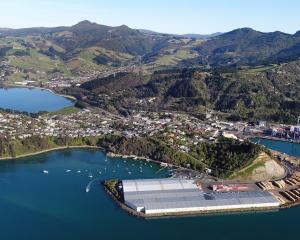Changes afoot in regulations governing water use in Otago will influence the region's prosperity for years to come, the Otago Regional Council says. Rebecca Fox looks at the council's sometimes controversial approach to water quality and quantity.
Green grass, sparkling water - 100% Pure New Zealand.
Yet that image has been knocked about in recent times as conservationists, environmentalists and political parties hail the image as just a front.
Green Party leader Russell Norman has kayaked down "dirty" rivers to highlight their plight and the Conservation Authority has called for national protection of them.
Most agree - in the words of authority chairwoman Dr Kay Booth: "Our rivers are under increasing pressure from development and intensive agriculture - the water take has almost doubled in the past 10 years and at the same time water quality has fallen.
"The time to act is now. The Conservation Authority fears that if steps are not taken to protect our best rivers we will lose them."
But that is where agreement ends.
In Otago, the regional council - the body given the responsibility to look after our rivers by the Resource Management Act - has bucked conventional thinking and taken its own path.
Why? Because Otago is different it says - its water issues are about allocation, its rivers are mainly in good condition and it is the only region to have major mining rights issues.
The path is one that council chairman Stephen Woodhead says people at a national level were not interested in hearing about, until six months ago.
"The message is starting to get through that there is more than one way to skin a cat."
It began with the council taking issue with continual reports that all the country's rivers were "dirty" based on problems in other regions. The council stands by State of Environment reports which show the majority of Otago's rivers are fine.
Environment director John Threlfall admits there were "one or two hot spots" such as West and South Otago - areas most affected by the expansion of intensive farming - but the rest were in good shape.
The plan of attack then was to prevent any of the rivers in "good shape" deteriorating, and improving the quality of those declining - "Holding on to what we've got," he says.
So the council set out its priorities. At the top of its list - sorting the region's complicated mining rights system well before its expiry date in 2021 and putting in place a regime to keep the region's waterways clean without imposing more regulations on those that use it.
It began with the innocuously named water plan change "1C", which six years after its inception has just become operational.
It puts the power to control water for irrigation in communities' hands and encourages co-operation and collaboration between water users.
Chief executive Graeme Martin says the change will determine Otago's future for the next 150 years as it will allow for communities together to make decisions on big infrastructure investment such as bulk water storage - "the concrete and steel".
"That is unique for New Zealand."
Essentially it is replacing the "old" mining right system, with the "new" - making decisions on water access that is the best for the community not just because it was an existing mining right or is the easiest source.
"It puts people on a level playing field. They have to work together for the best use of the resource. It shifts the responsibility for good management back to those taking it."
Put simply, it's working together without the regional council or the Government getting in the way, he said.
Policy director Fraser McRae agrees, saying, if used to its potential, "IC" could cut a lot of bureaucratic cost out of water management.
Some communities, including those in the Upper Taieri and Tarras, were already taking a serious look at making the new regulations work for them.
However, it does not compel people to take part. If people opted out they would be administered as usual.
The council is planning to not "just talk the talk, but walk, the walk" on this. This year it will look at capital investment in water schemes - a first for the 21-year-old organisation.
"It's quite exciting," Mr Woodhead says.
With "1C" now official, the council plans to concentrate on the next step - keeping Otago's rivers clean.
The philosophy behind its proposals to do this are contentious.
The established thinking on the problem is to regulate land use - tell farmers how many dairy cows they can run or how much fertiliser they can use.
Instead the council's proposal is to let land users do what they want on their land as long as what rolls off it into waterways meets certain standards for things like nitrates, E.coli and sediment.
It was an approach that had one major problem - the technology to do so was not there - so the council invested in research to develop it. Trials of the new technology are under way in the Manuherikia and Tarras areas.
Meanwhile, the council has been travelling the region holding water forums and public meetings to get the community's take on the philosophy.
Early this year the council will pull together all those opinions into a draft rural water quality plan, which after it has gone through the council processes, will go out for formal consultation about March.
The process will be the communities, business and environmental organisations and local authorities' chance to have a say on the form water quality regulations will take in the future, with the formal consultation and hearing process expected to take most of the year.
After avoiding an Environment Court hearing on "1C" after nine challenges, the council is hopeful it is an indication that those organisations see the value in where the council is heading.
"They've had three cracks at it, and they've not had any play," Mr Martin said.
Running alongside this process is the council's ongoing consultation with communities to set minimum flows on the region's rivers and catchment studies to provide communities with the knowledge needed to help farmers meet the new standards.
They admit its plans go against entrenched ideas and that it will take a generation for change to happen. But much of the change will come with small changes such as keeping stock - dead or alive - out of water ways.
"Otago has to prove it, it has to continue to do better. The proof will be in the State of the Environment reports in the next five to 10 years."
At the end of the day all the changes were aimed at not only providing a better environment for future generations, but also providing community prosperity, making Otago an attractive place for rural business and development.
"It should be a great place with good. clean, green business."












